Samarkand - 2013
Samarkand is most noted for its central position on the Silk Road between China and the West,
and for being an Islamic centre for scholarly study.
In the 14th century it became the capital of the empire of Timur (Tamerlane).
It had the best collection of historic tiled buildings of any of the cities
and former emirates that we saw along the Silk Road.
It is the 2nd largest city in Uzbekistan.
The name derives the name from the Old Persian asmara, "stone", "rock", and Sogdian kand, "fort", "town".
On our first night in Samarkand, we had dinner in the courtyard of a local family's home.
The mother, Moborak Sharipovna, a former maths-physics teacher, is the organiser.
Her husband greets the diners and sorts out the parking outside.
Her son is a waiter and her daughter-in-law helps her with the cooking.
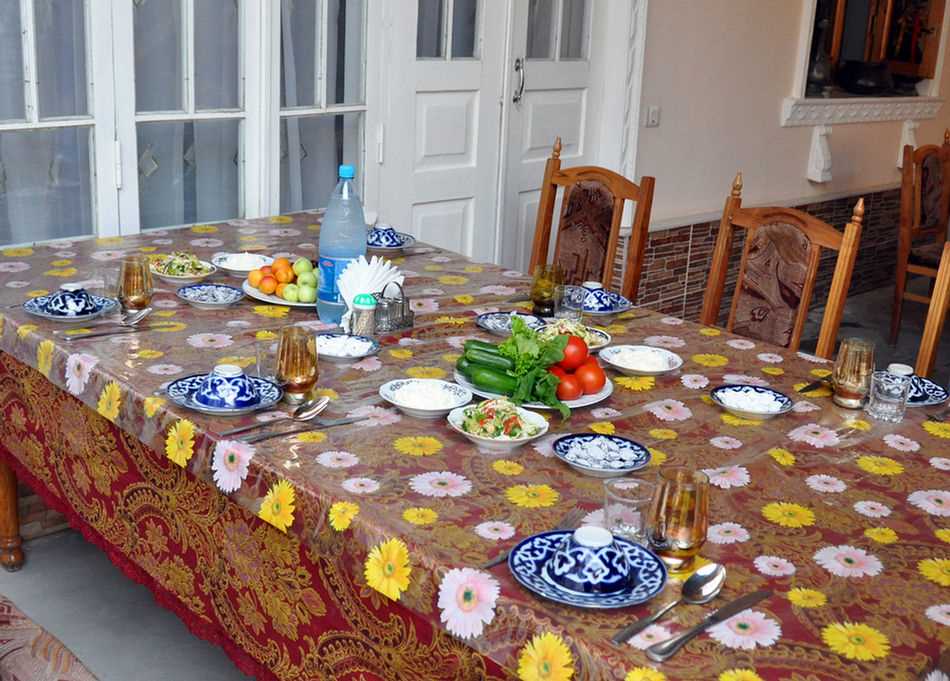
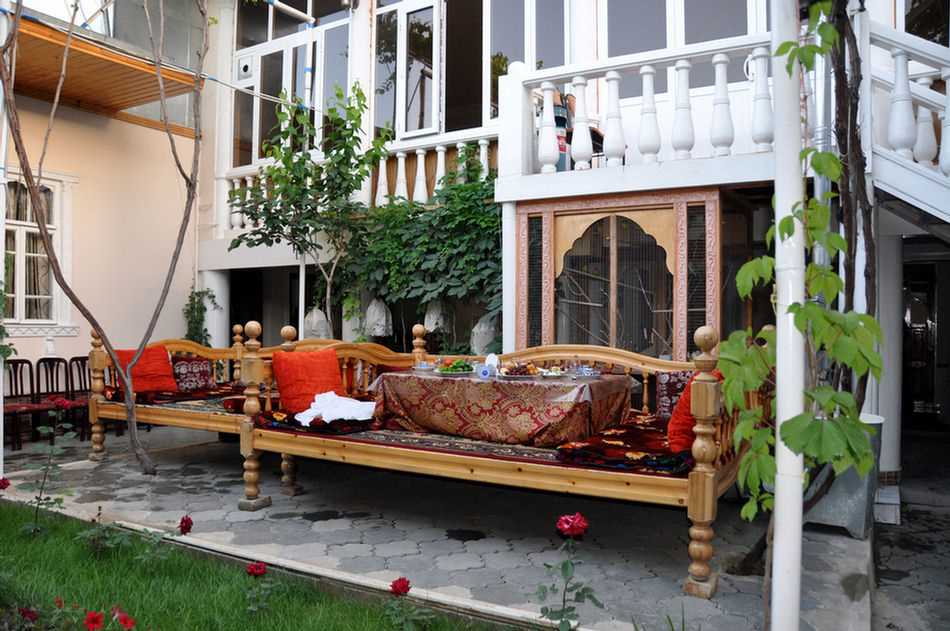
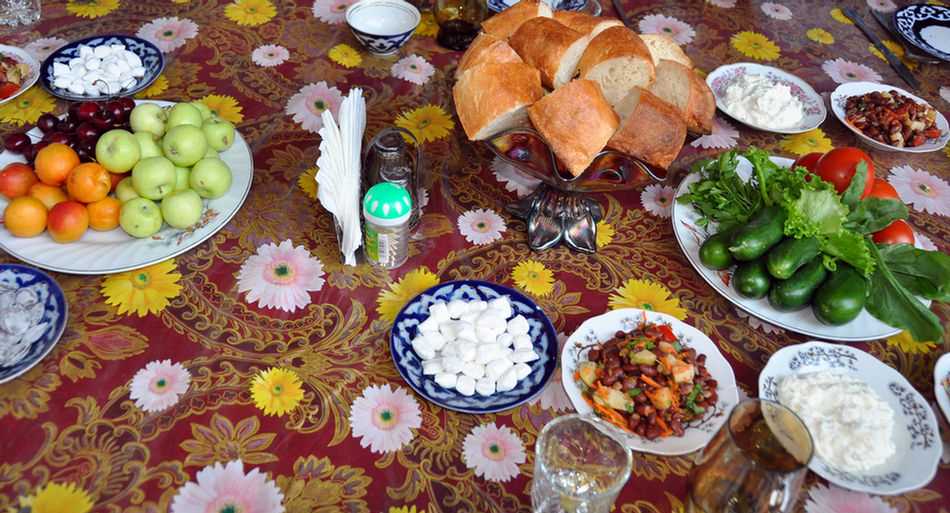
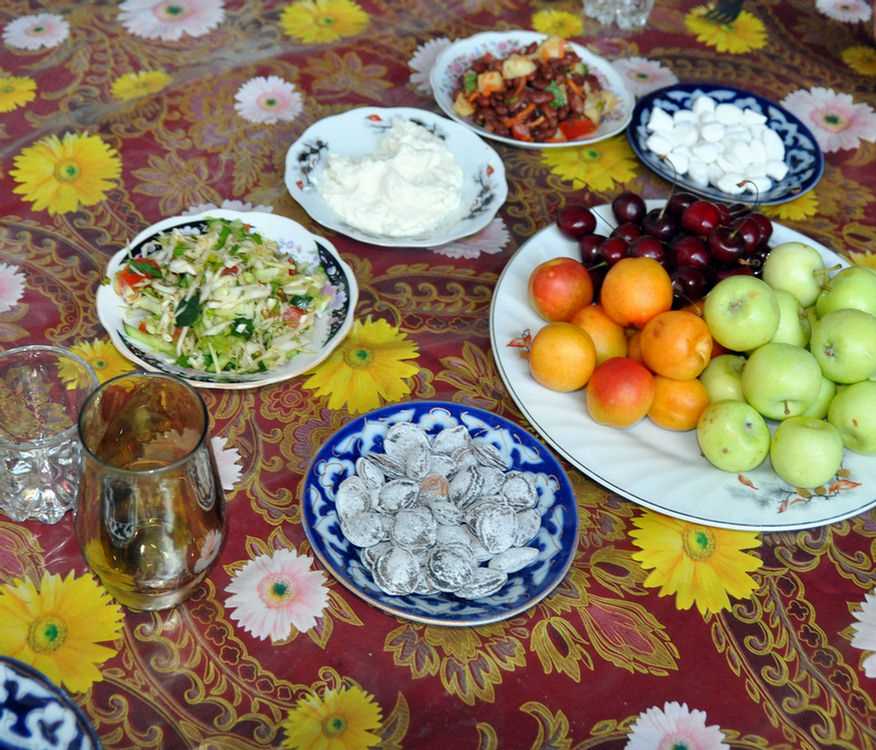
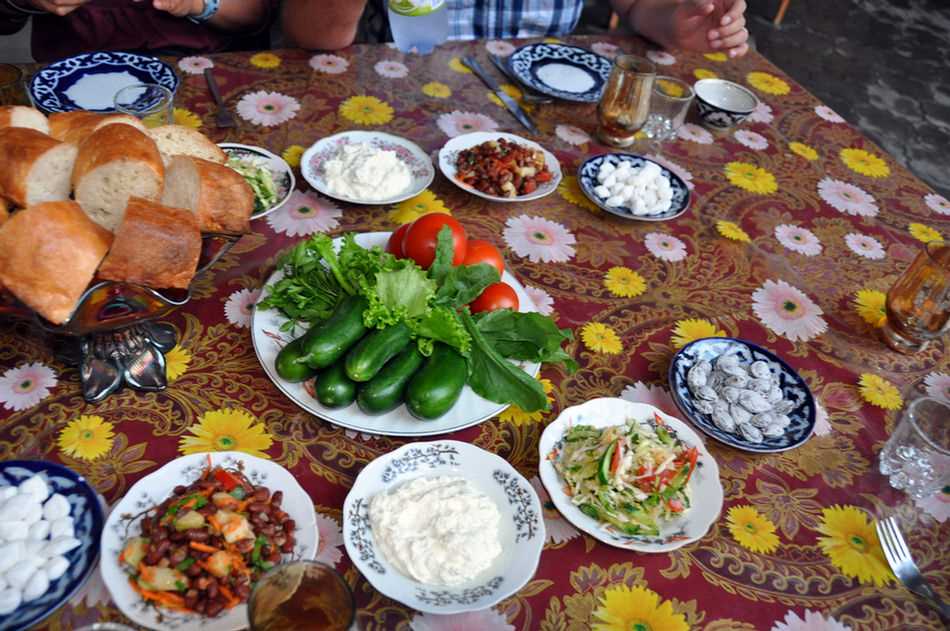
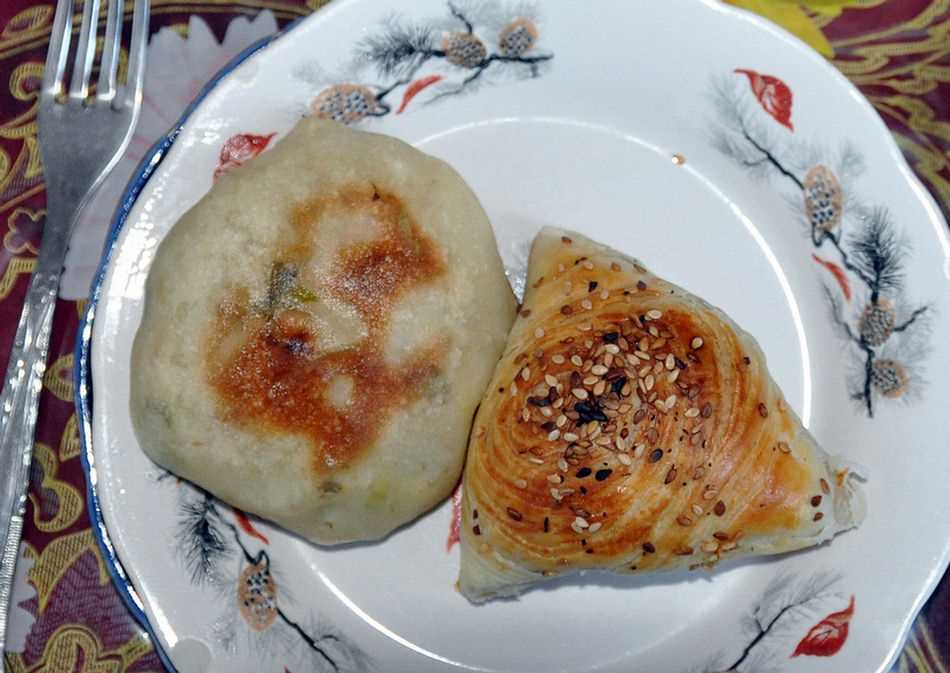
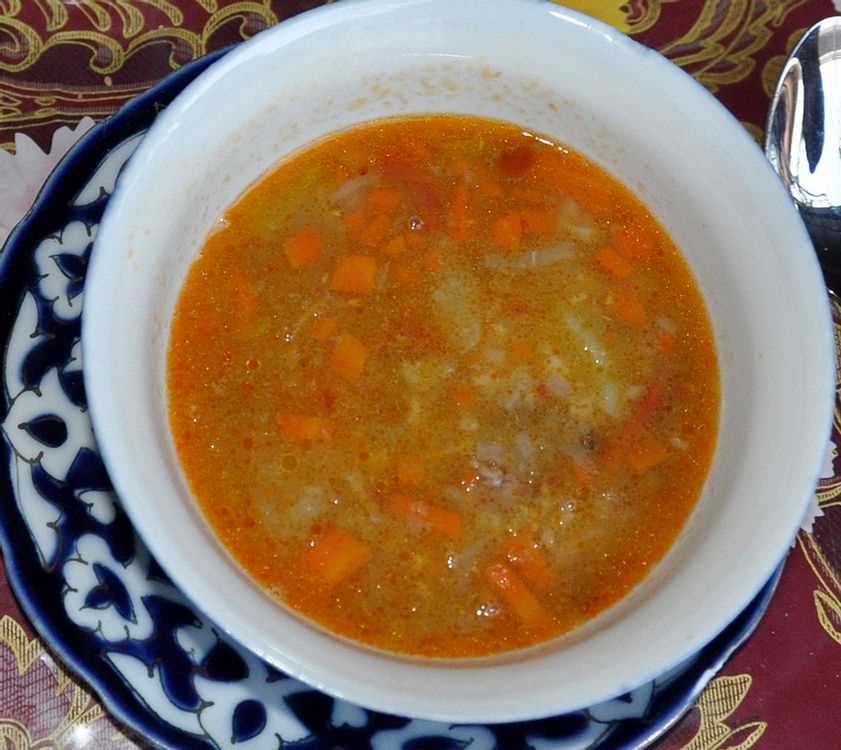
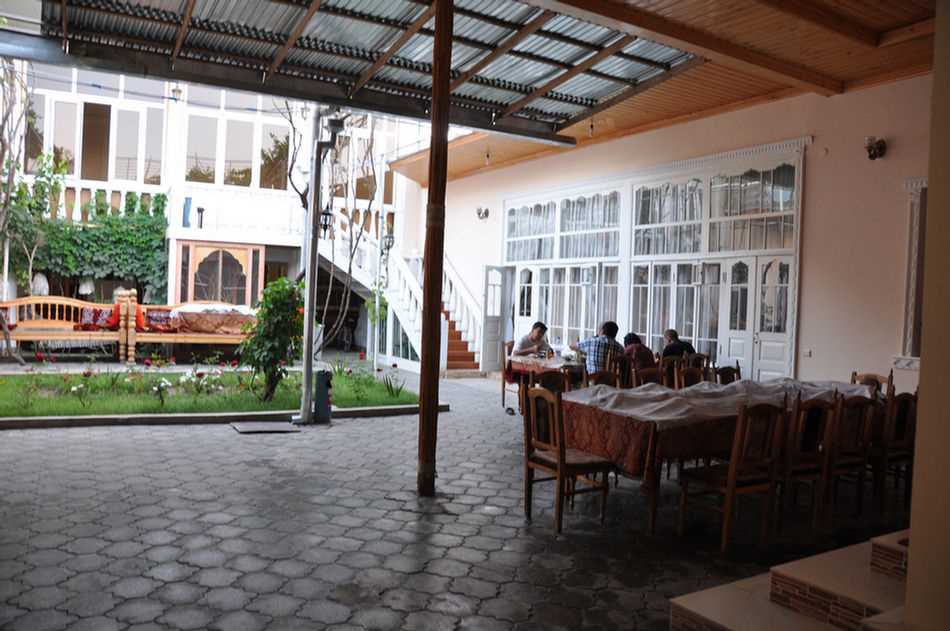
The mother, the organiser.
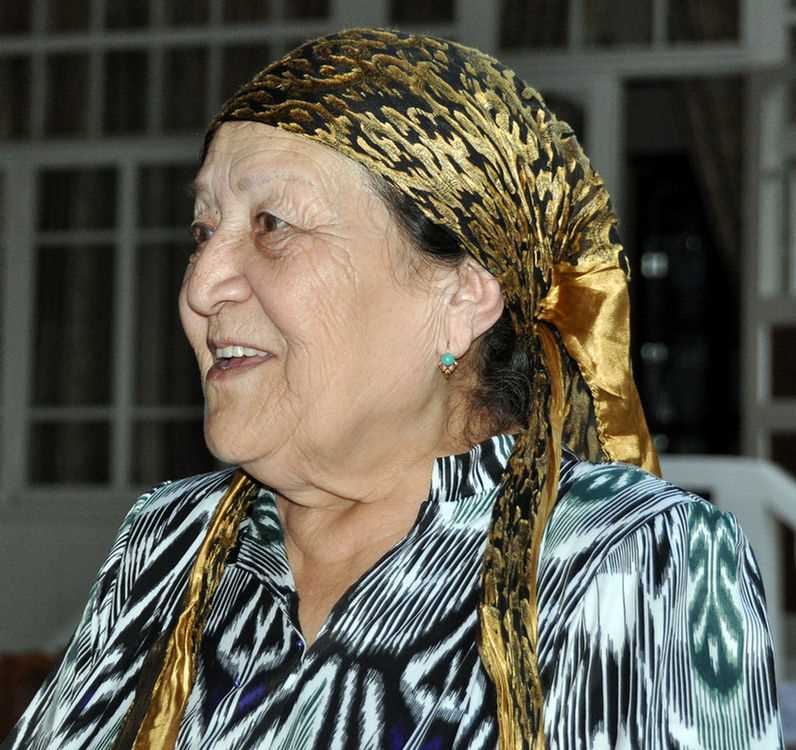

Plov, a Central Asian rice dish.
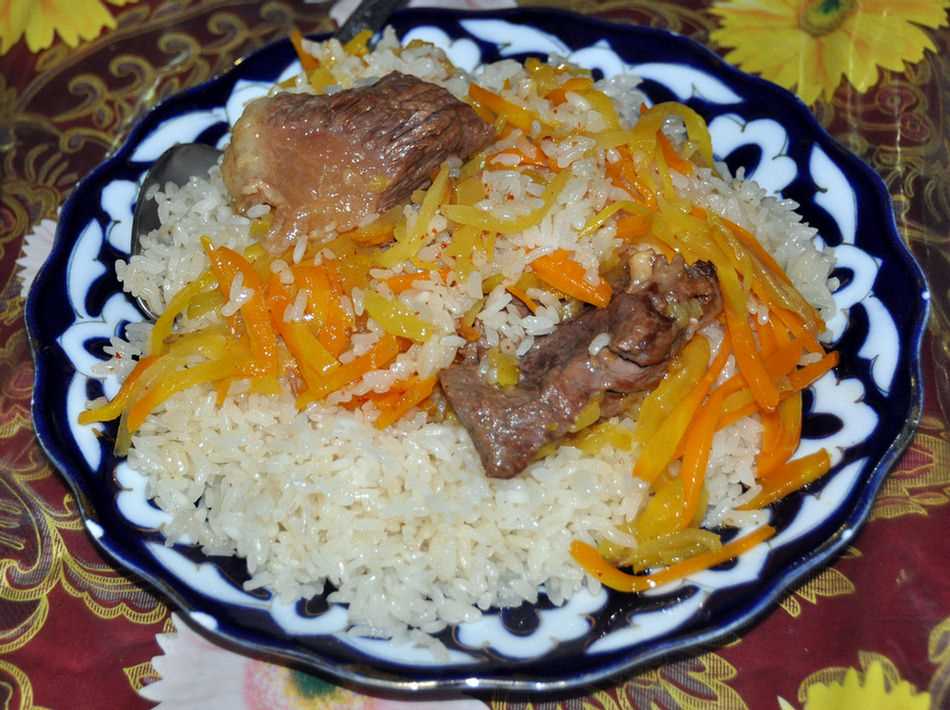

The courtyard at our hotel, The Malika Hotel in Samarkand.
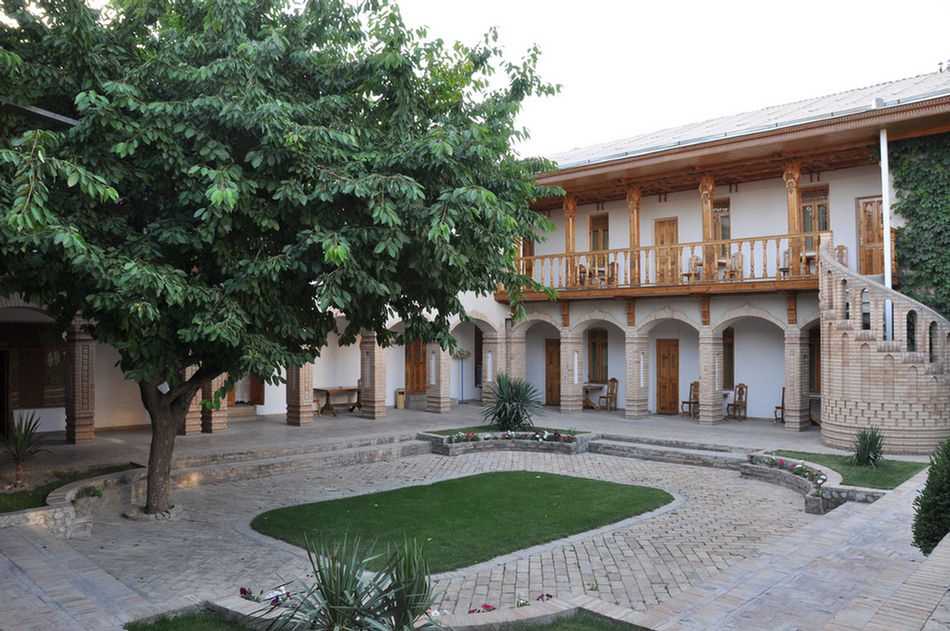
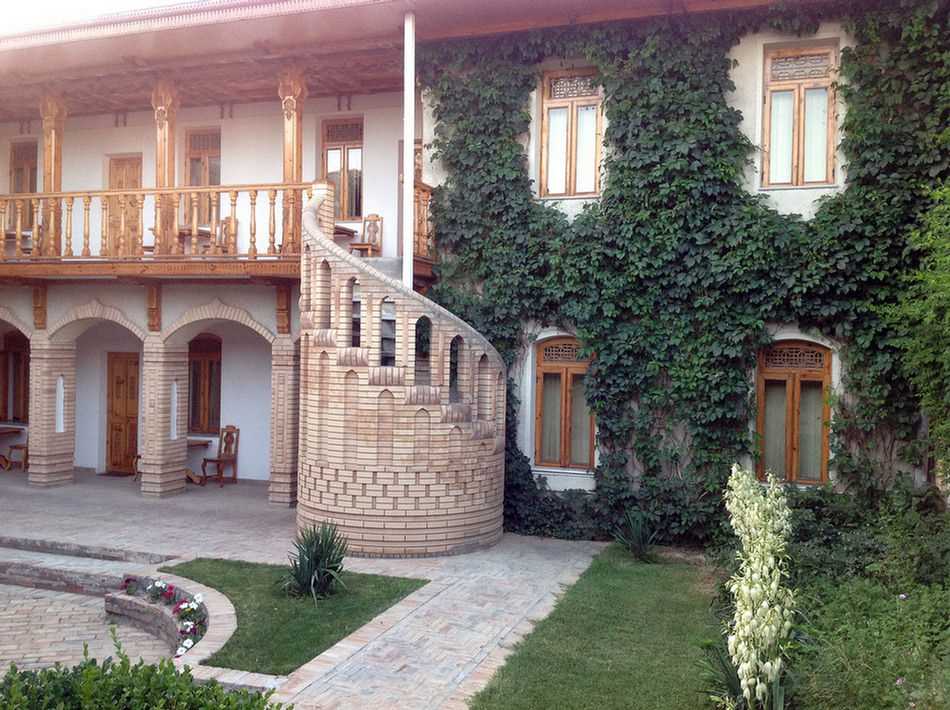
With Rustum, our guide in Uzbekistan.

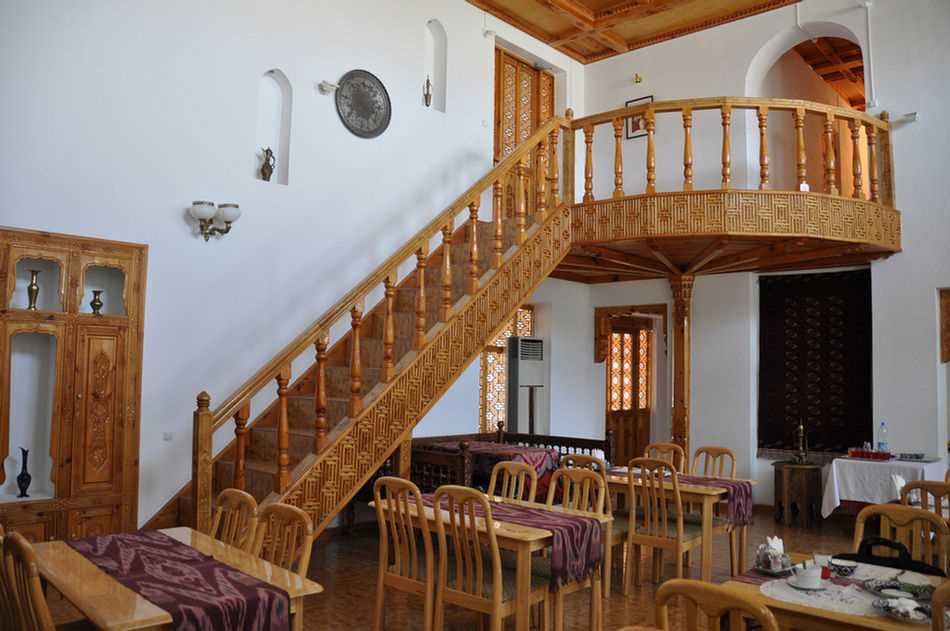
Dinner, the next night, at a city restaurant.
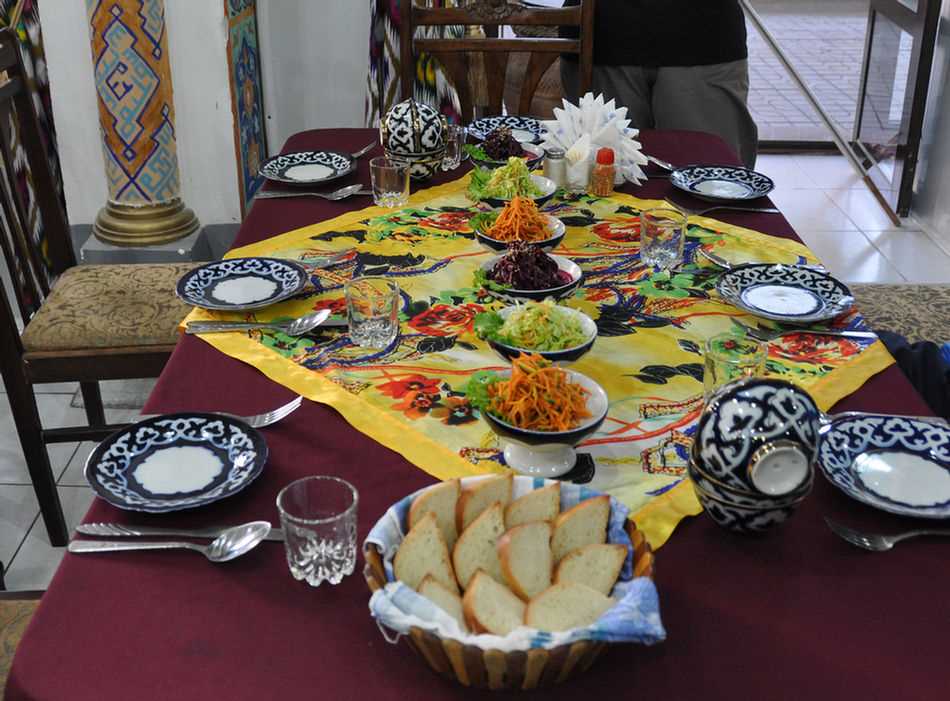
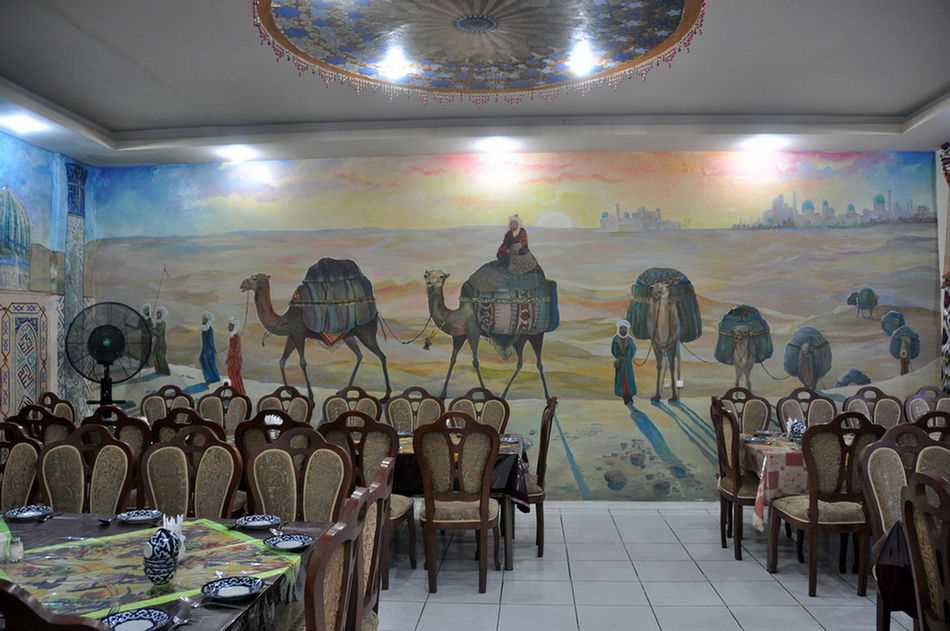
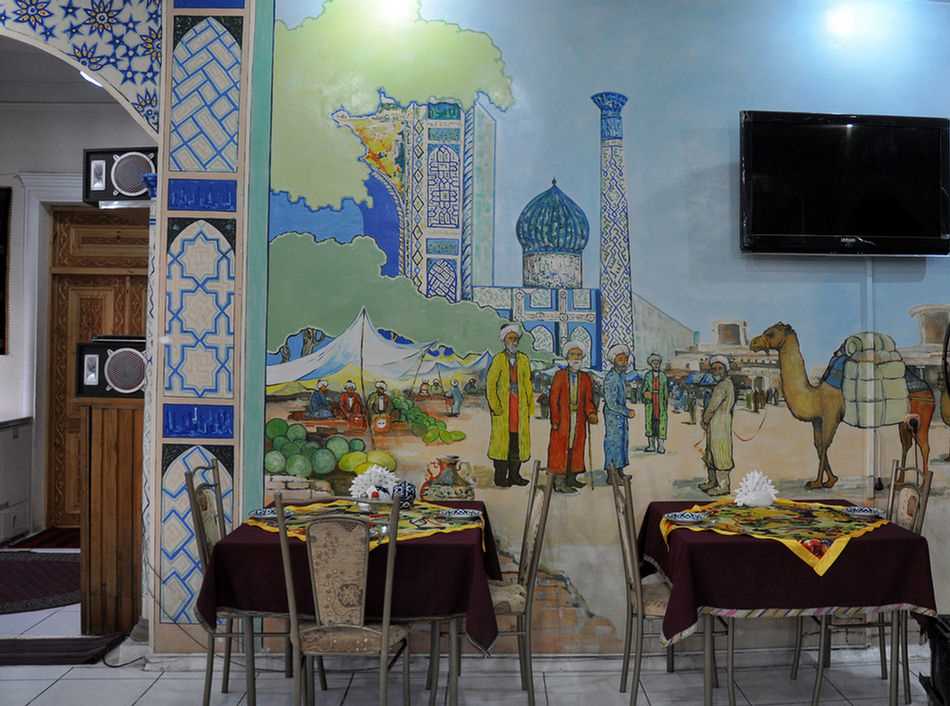
A beef stew with apricots and onions.
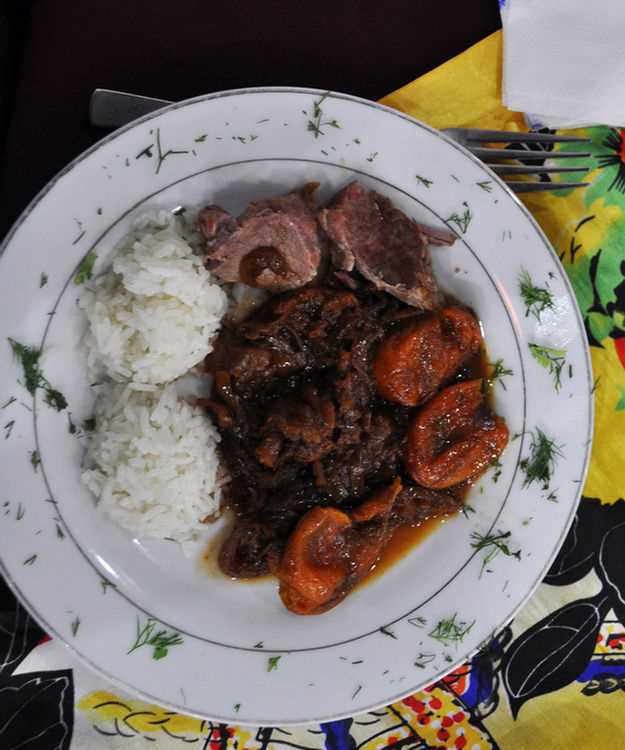

A sound and light show at The Registan.
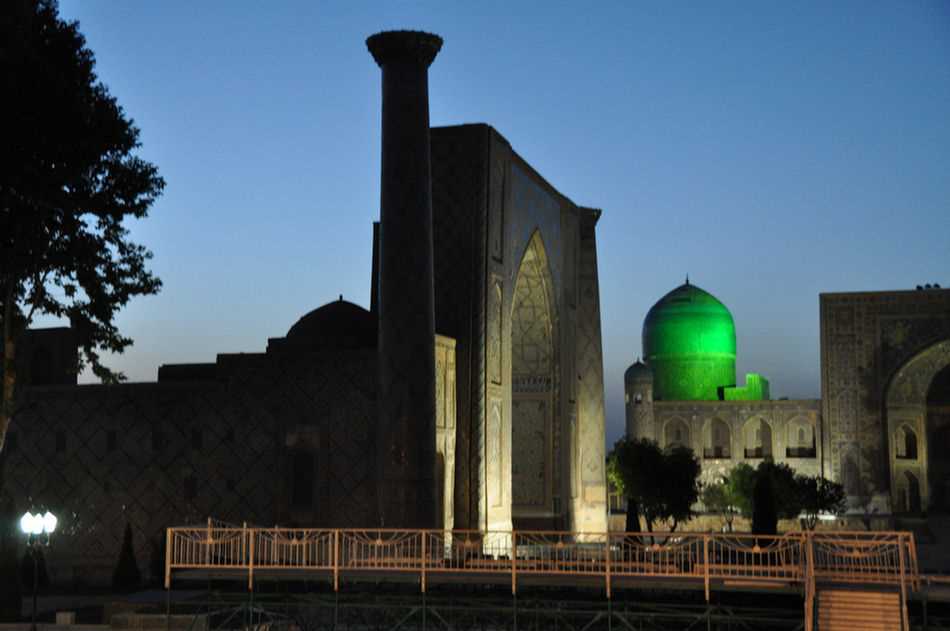
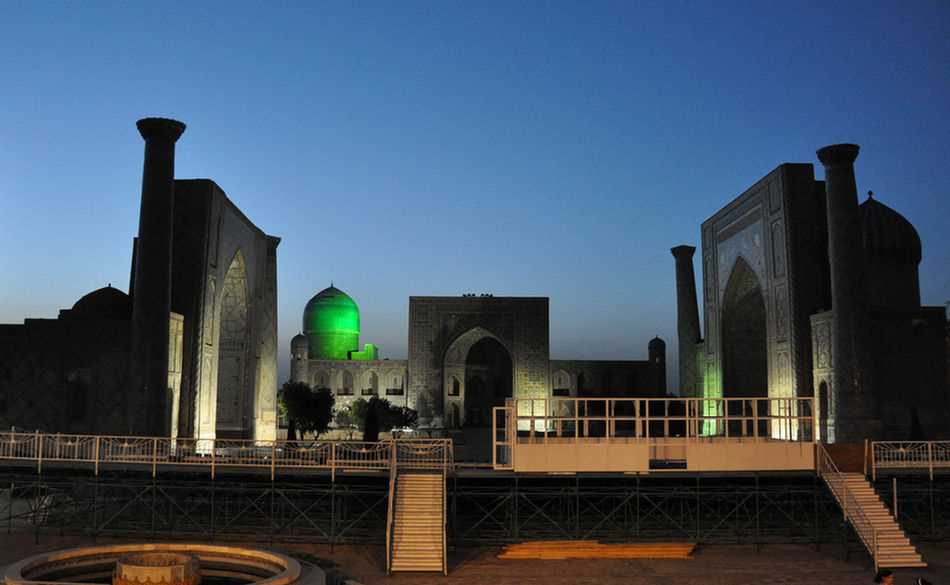
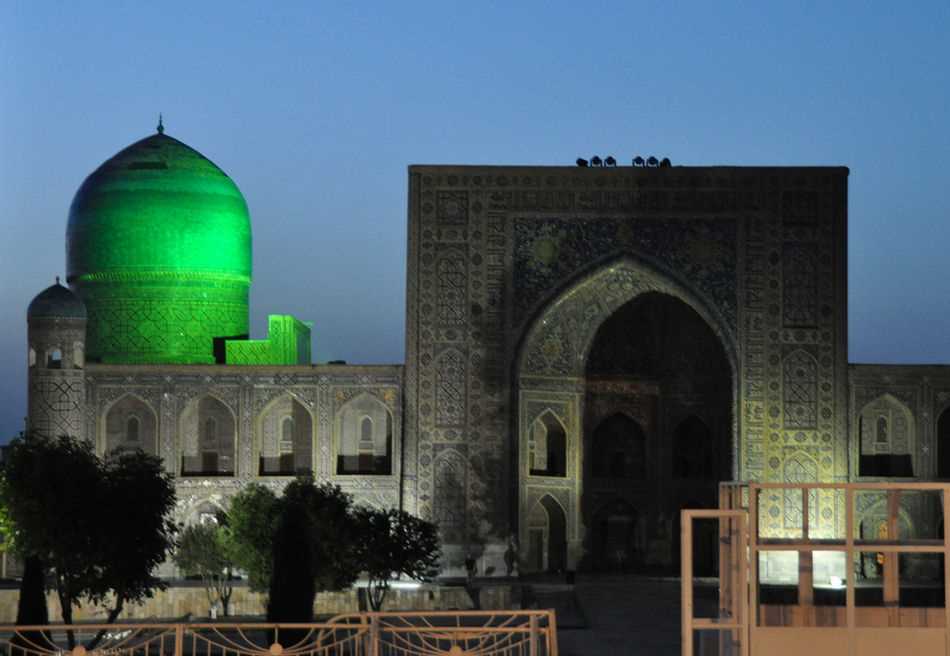
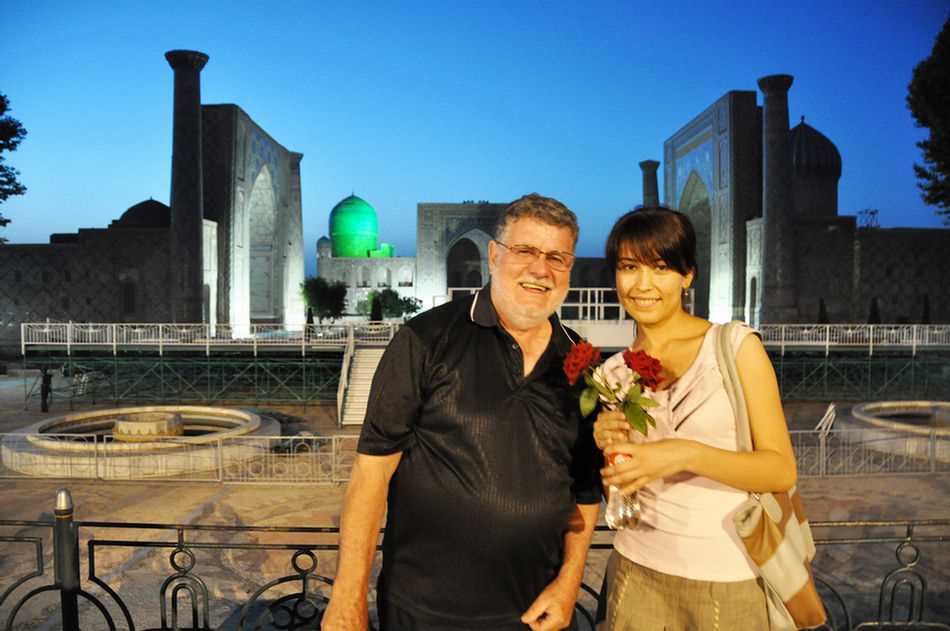
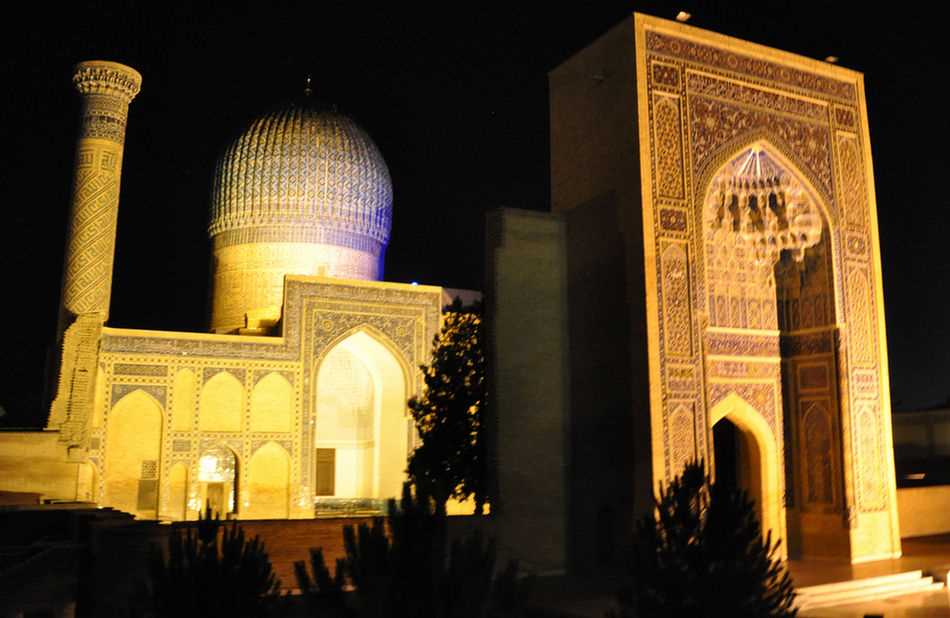

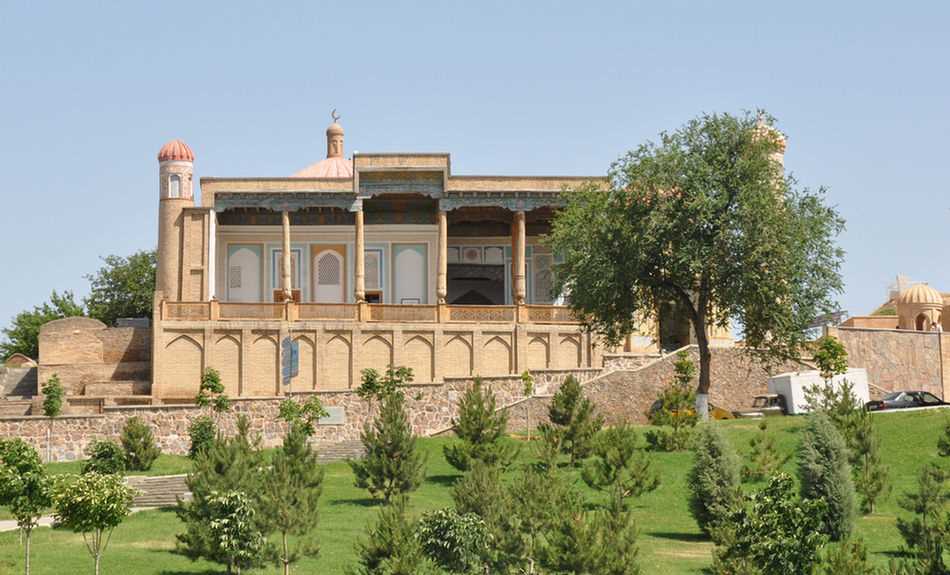
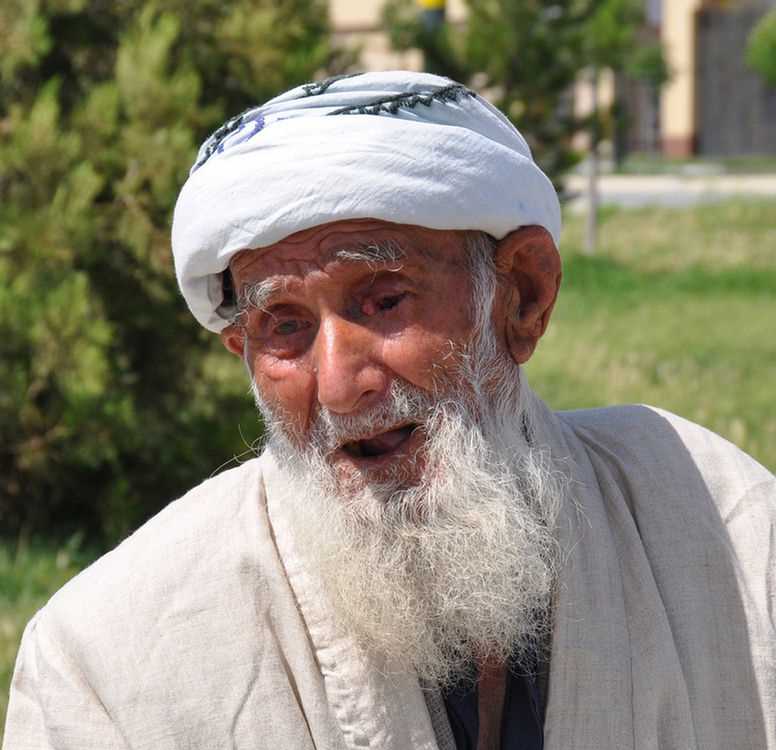
Siyob Bazaar.
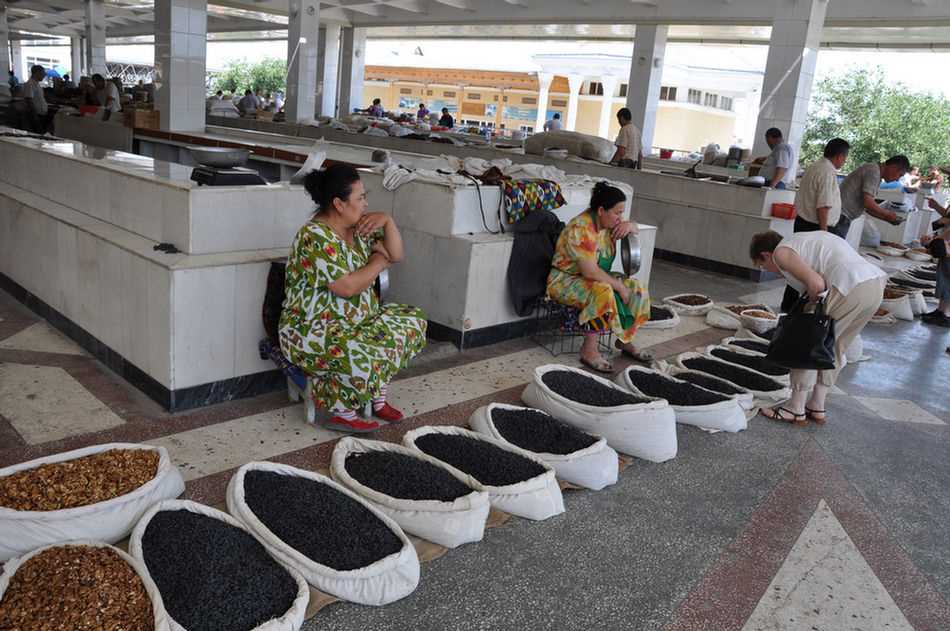
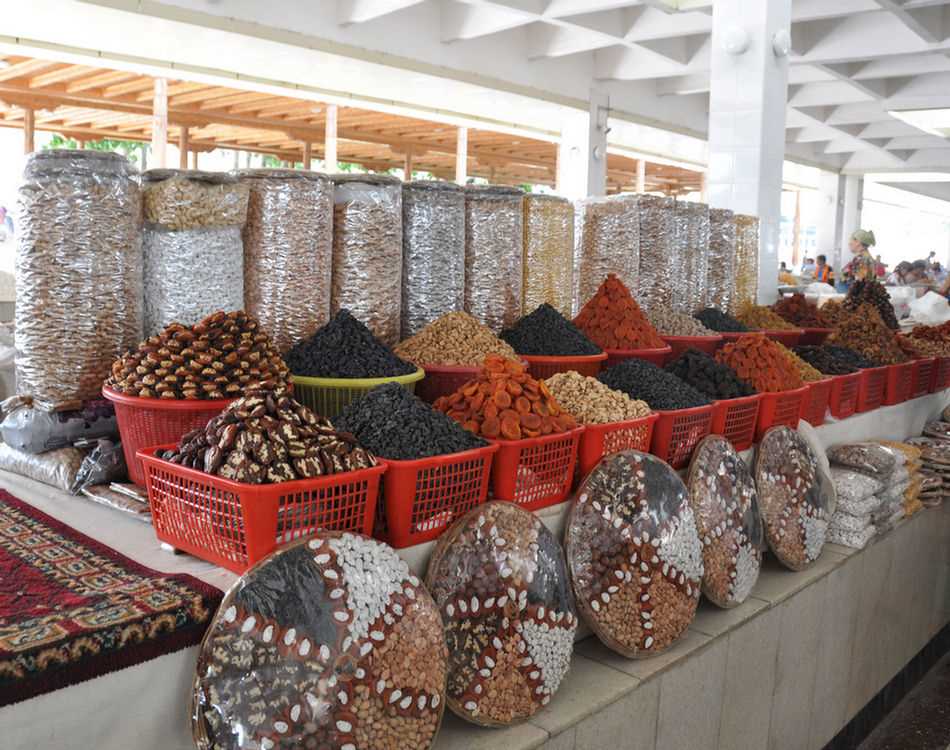
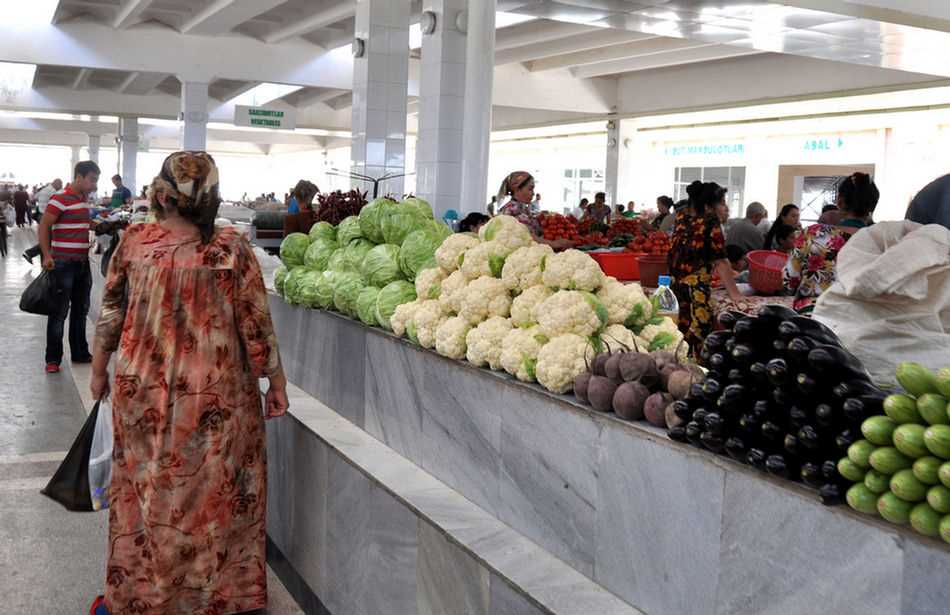
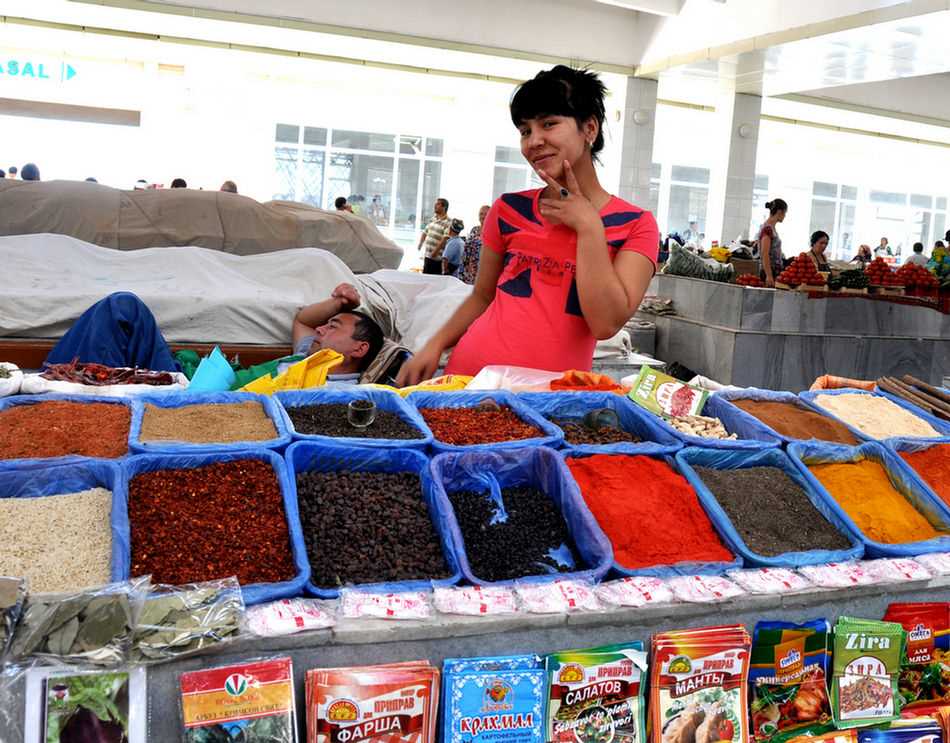
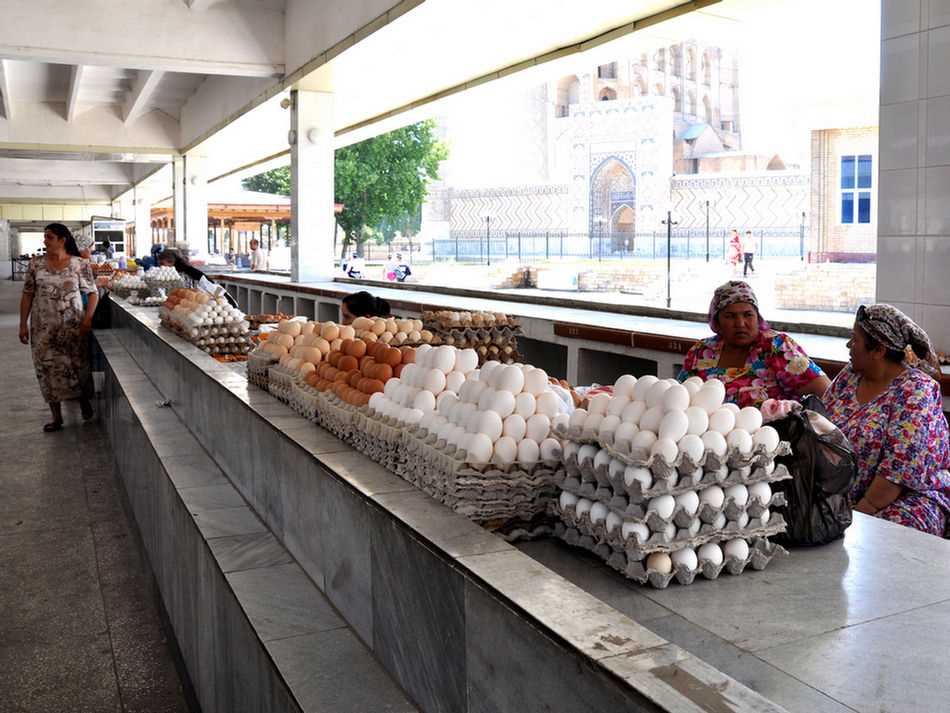
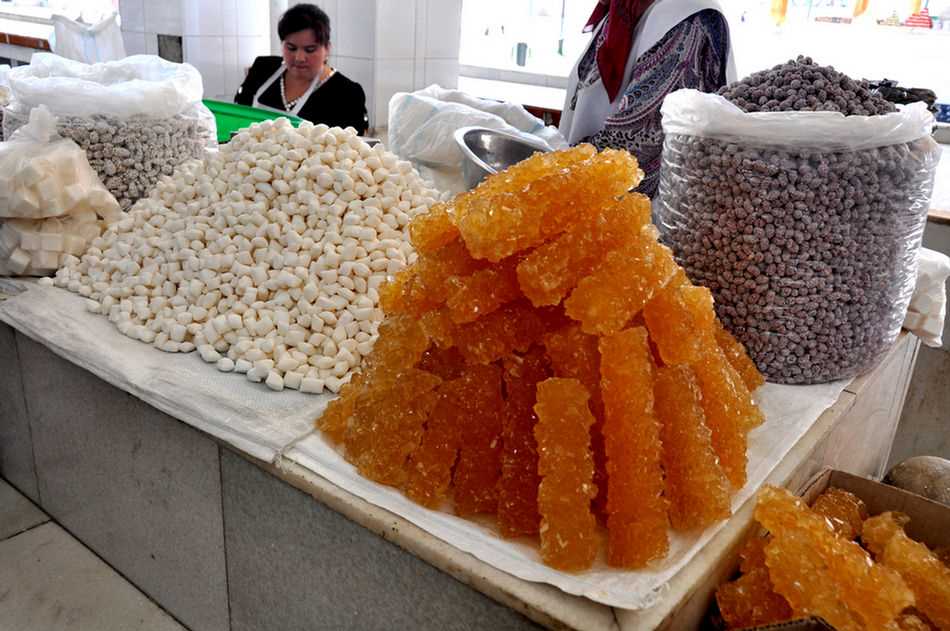
Samarkand Museum

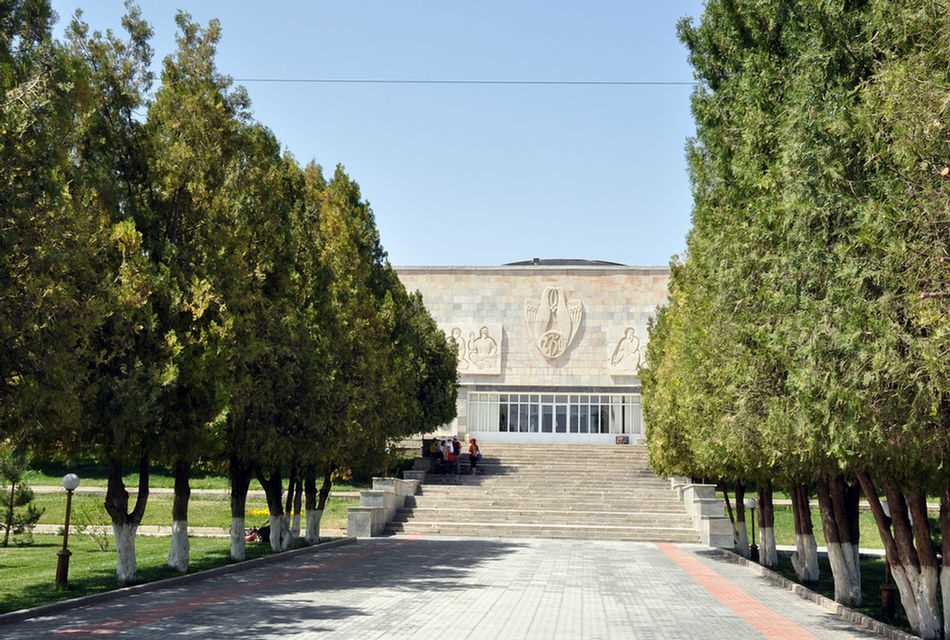
The museum is on the site of the ancient city of Afrosiyob.
It was built in 1970 to celebrate the city's 2750 years of history.
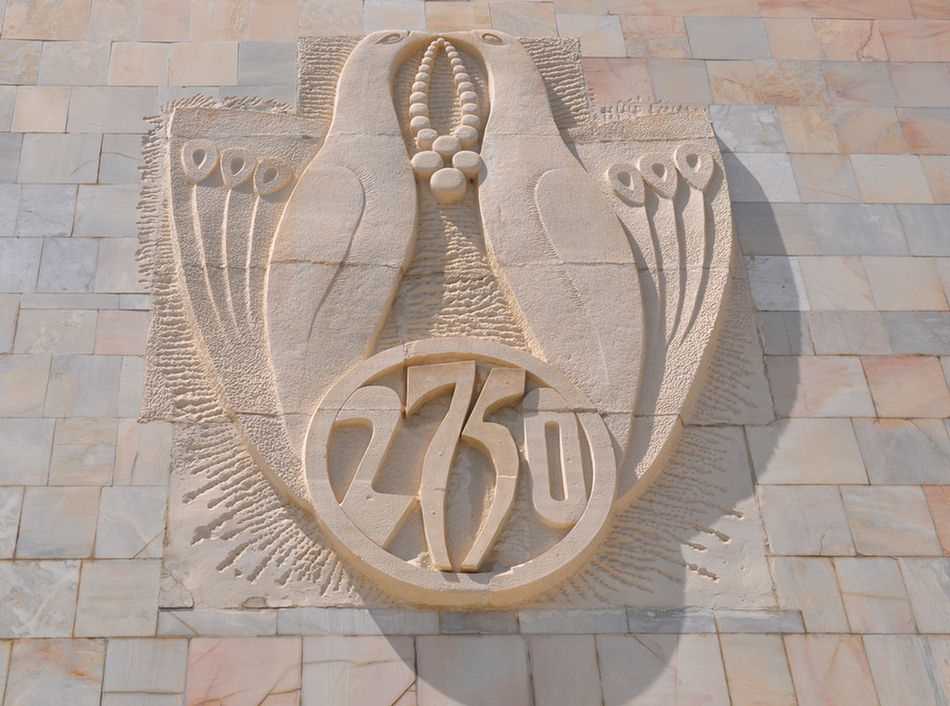
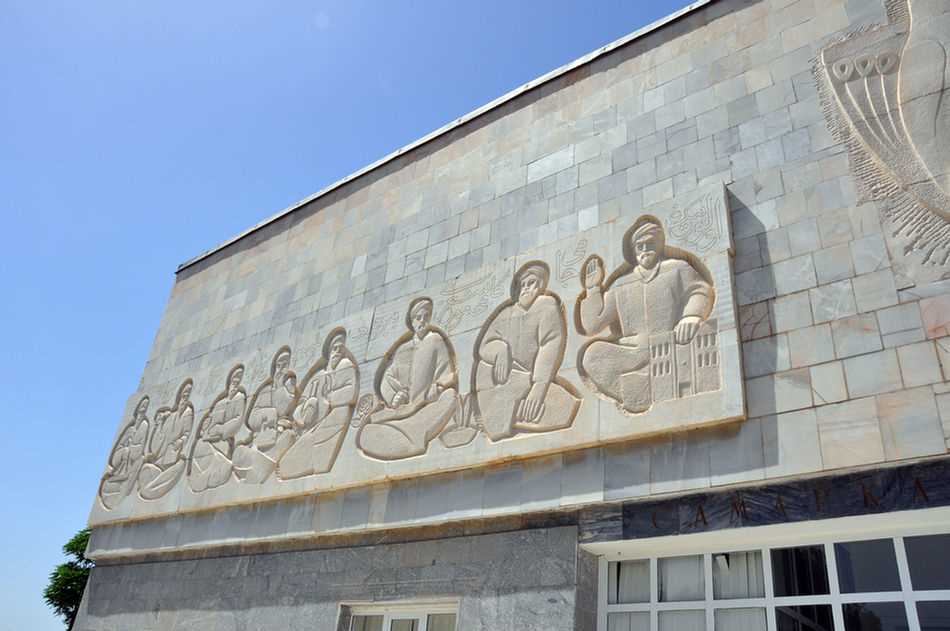
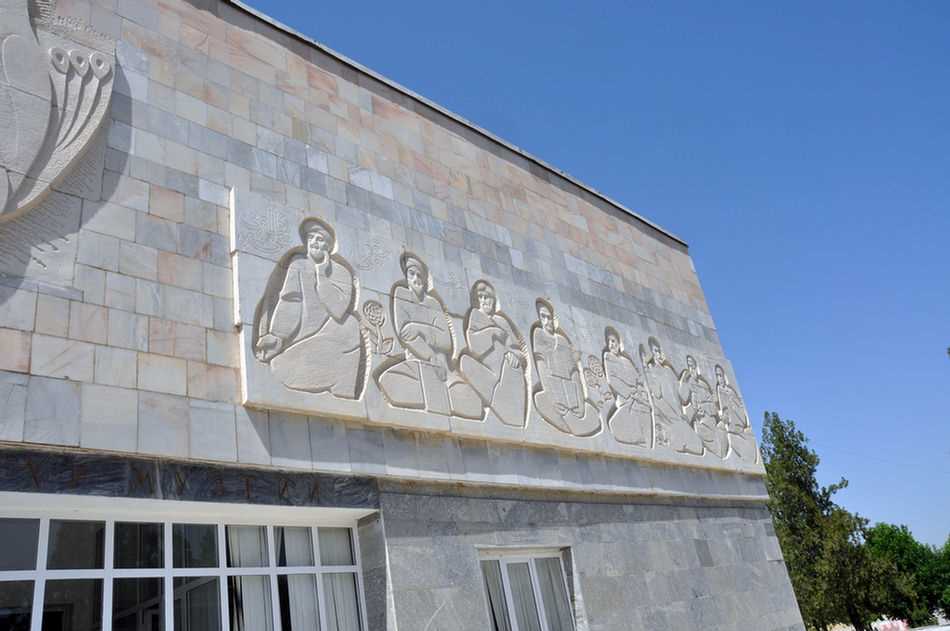
Excavated near the site of the museum in 1965, these frescos are from the
7-8th century palace of the Ihshid of Samarkand.
The procession is led by the bride, the Chaganian Governor's daughter, riding on a white elephant and accompanied
by friends and dignitaries on camels and horses.
Other frescos depict scenes of horsemen fighting against predators, as well as boats with men and women.

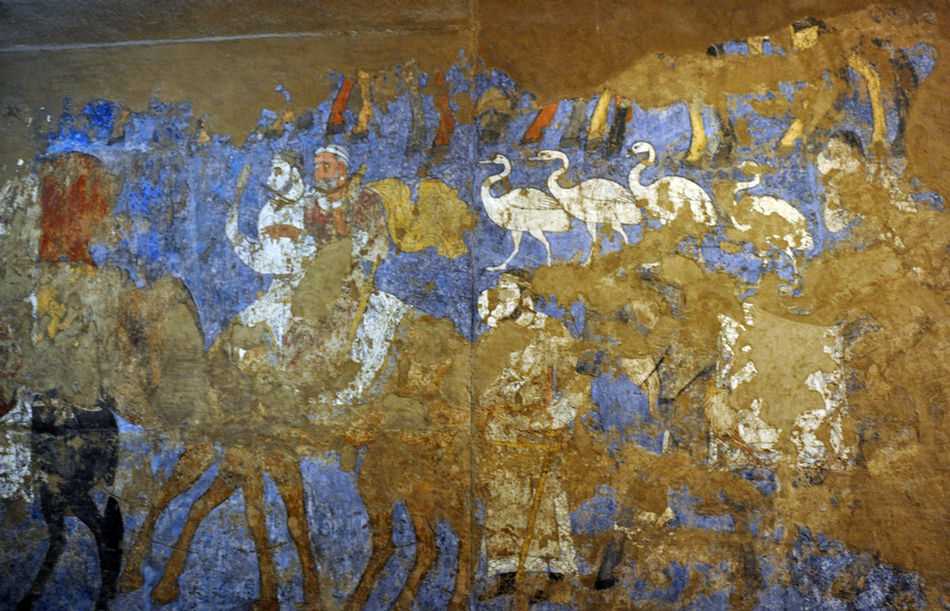
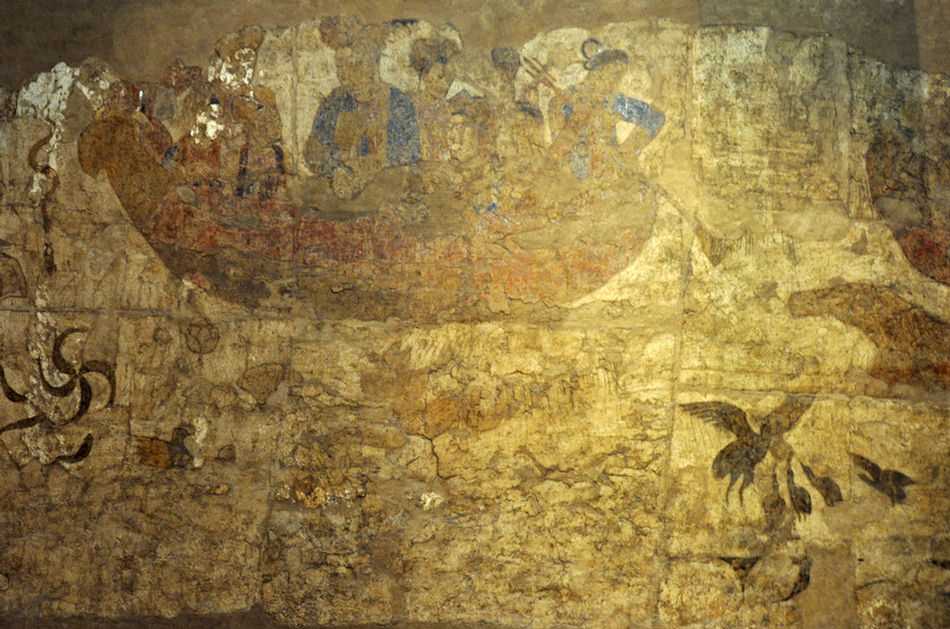
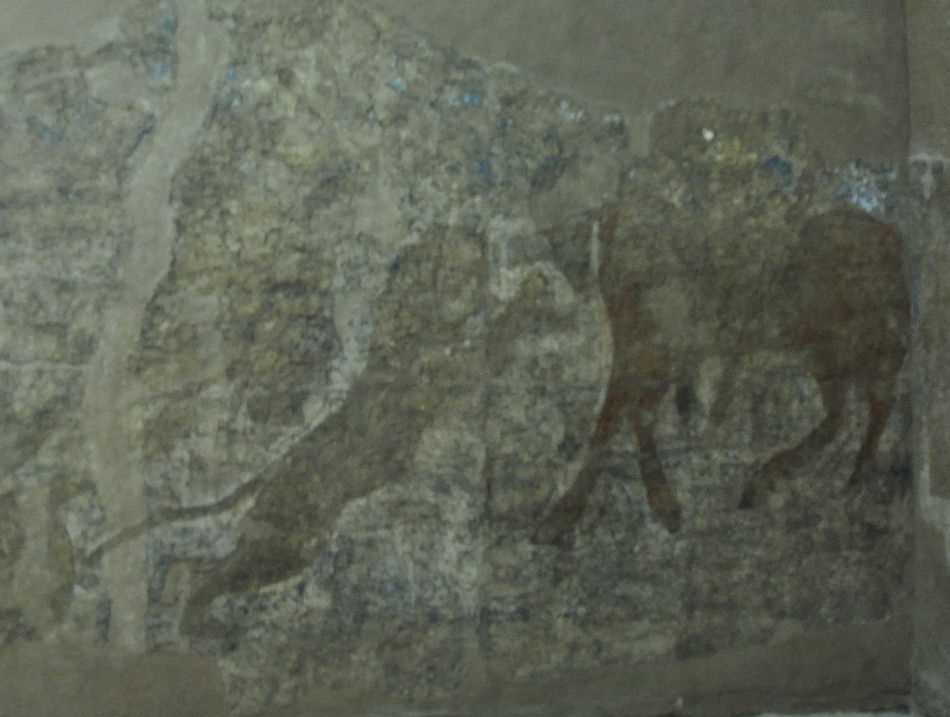
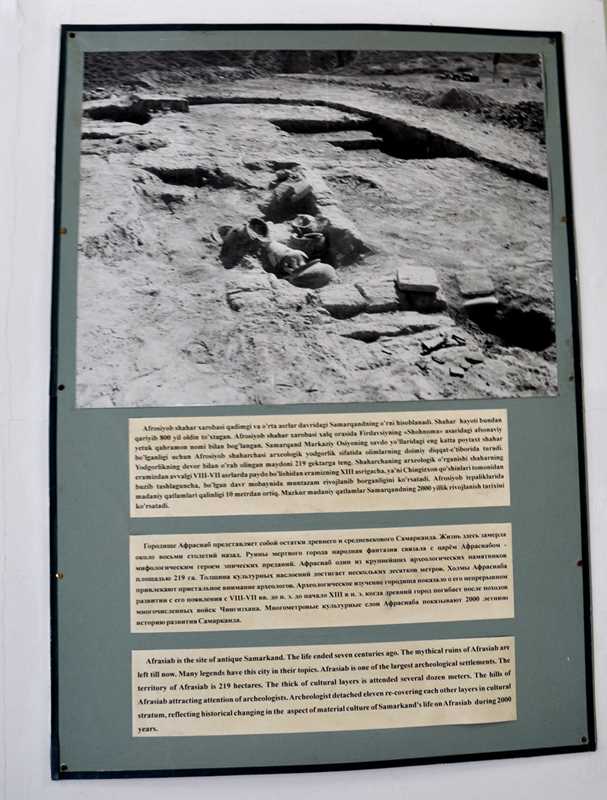

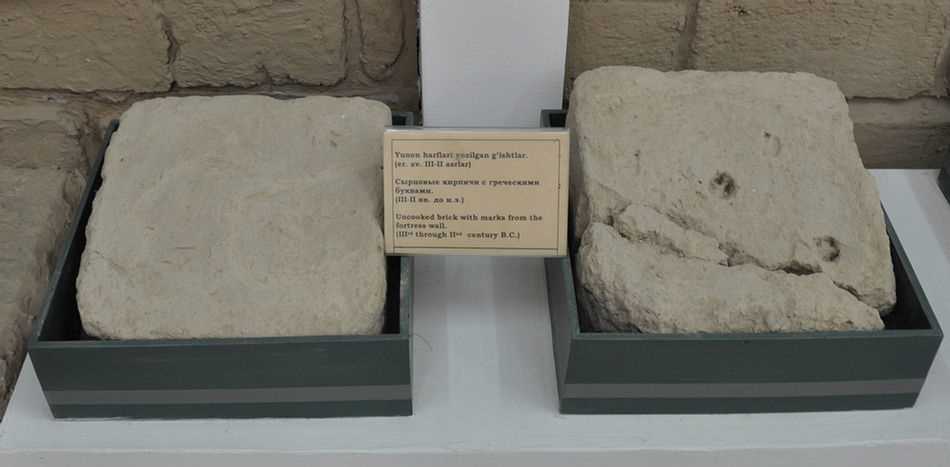
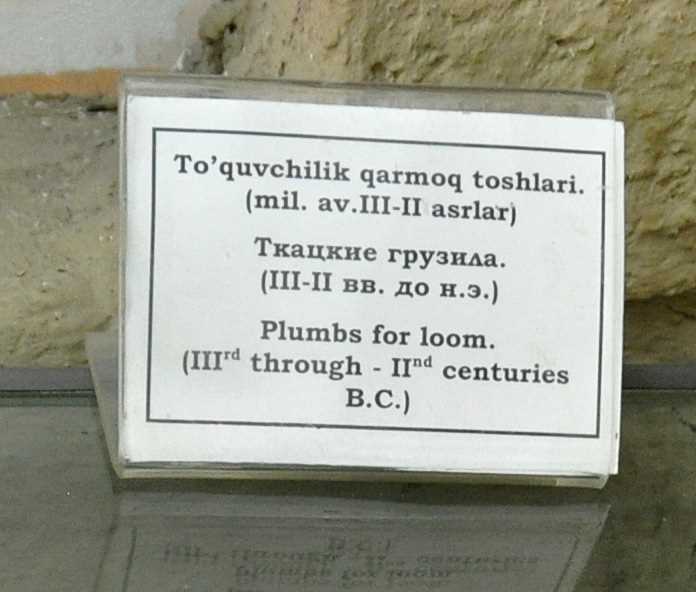

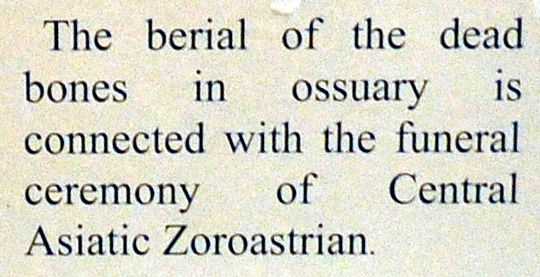
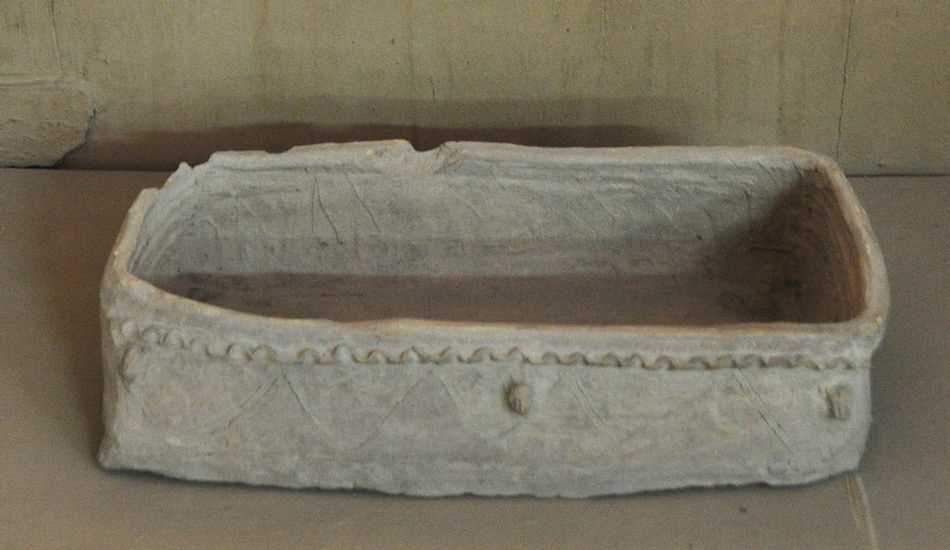
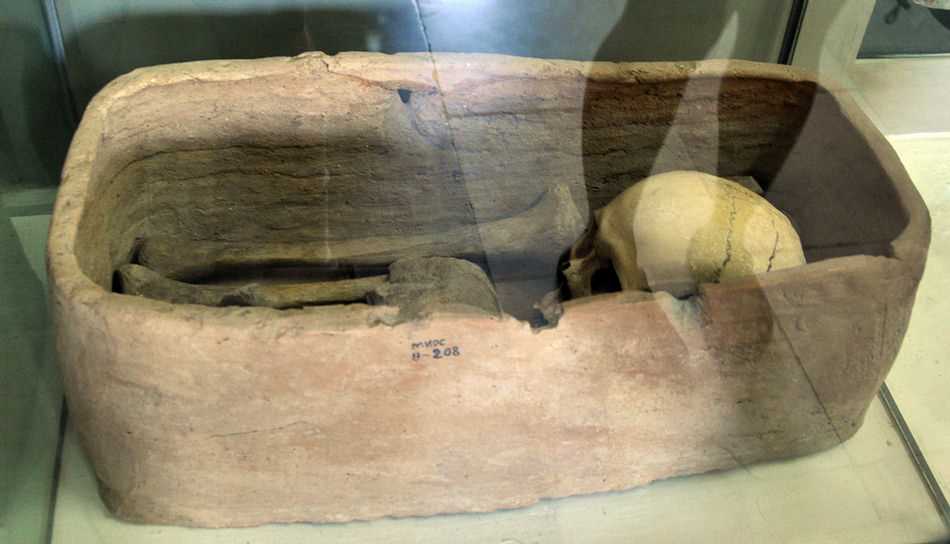
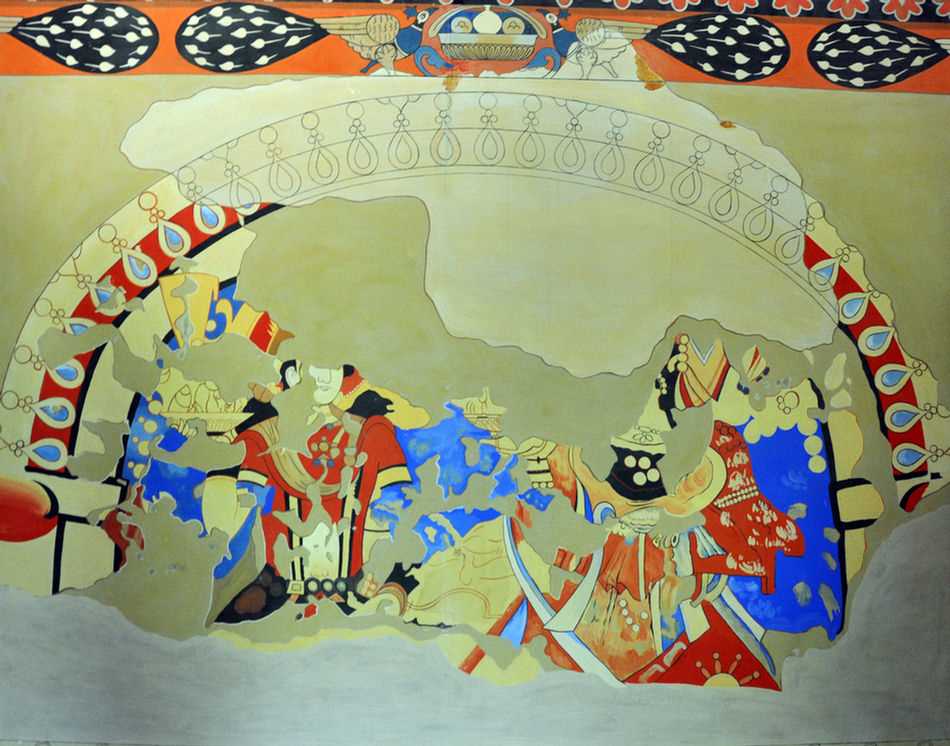
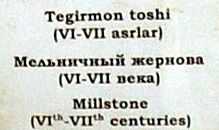
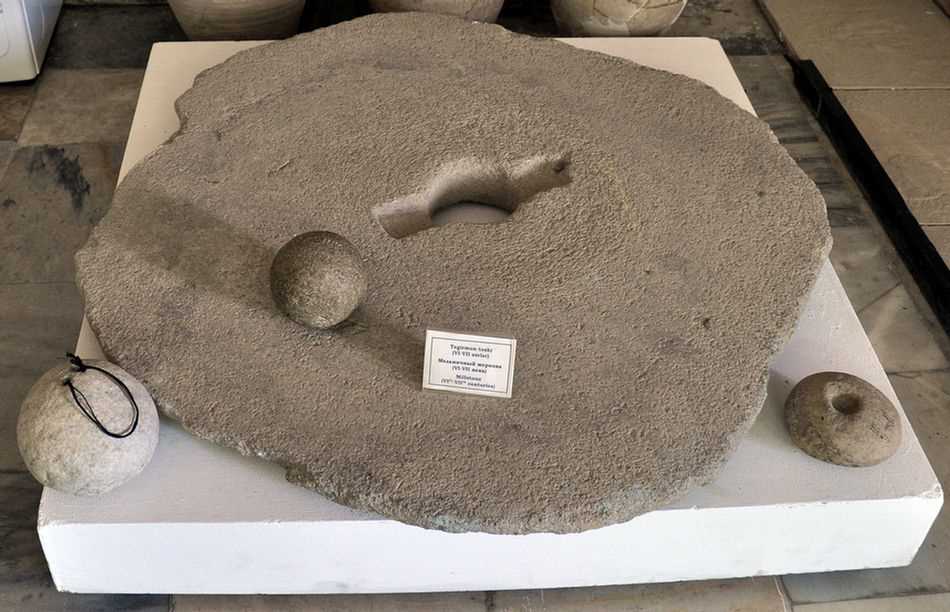

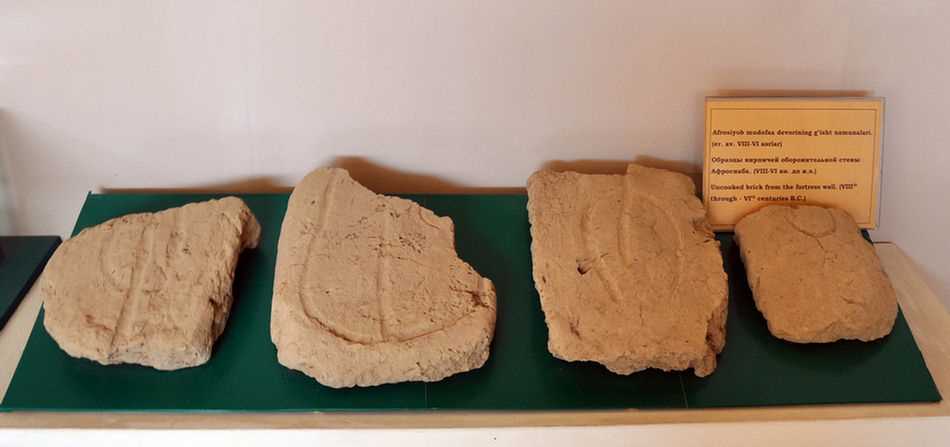


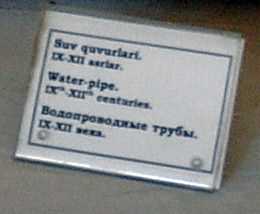
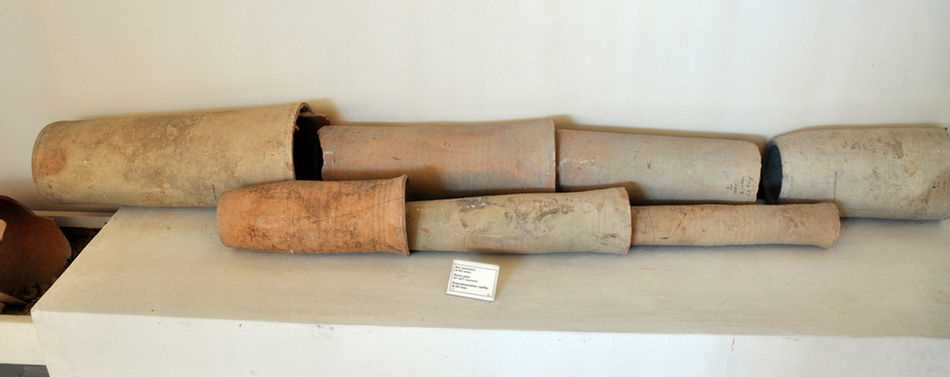

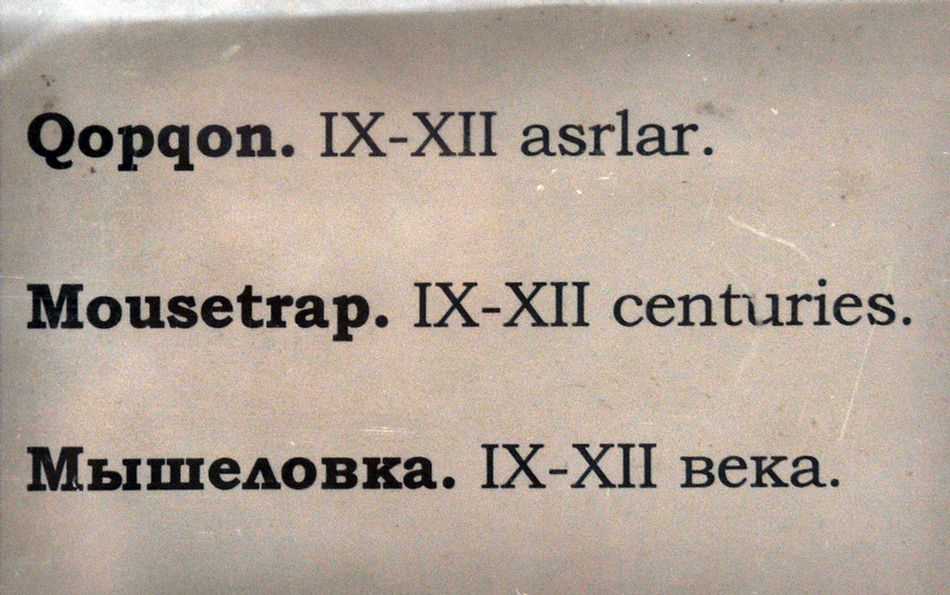
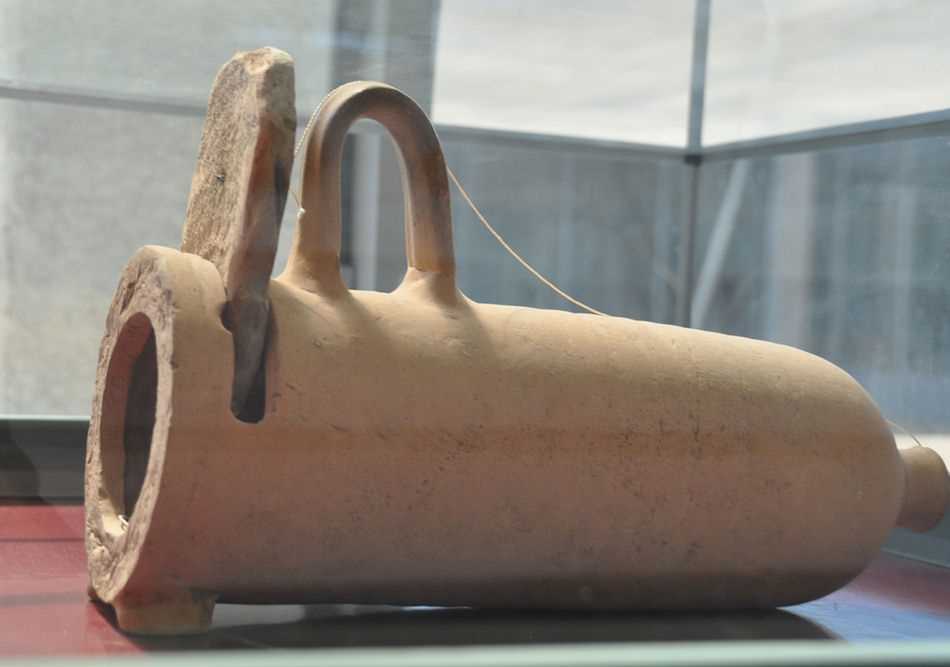
Part of the excavation site adjacent to the museum.
The ancient city of Afrosiyob had stood here before it was completely destroyed by Genghis Khan in the 13th century.
During the following century, on the plains below this hill, Amir Timur would build his capital now known as Samarakand.

Next ... Ulughbeg's Observatory at Samarkand
Samarkand is most noted for its central position on the Silk Road between China and the West,
and for being an Islamic centre for scholarly study.
In the 14th century it became the capital of the empire of Timur (Tamerlane).
It had the best collection of historic tiled buildings of any of the cities
and former emirates that we saw along the Silk Road.
It is the 2nd largest city in Uzbekistan.
The name derives the name from the Old Persian asmara, "stone", "rock", and Sogdian kand, "fort", "town".
On our first night in Samarkand, we had dinner in the courtyard of a local family's home.
The mother, Moborak Sharipovna, a former maths-physics teacher, is the organiser.
Her husband greets the diners and sorts out the parking outside.
Her son is a waiter and her daughter-in-law helps her with the cooking.








The mother, the organiser.


Plov, a Central Asian rice dish.


The courtyard at our hotel, The Malika Hotel in Samarkand.


With Rustum, our guide in Uzbekistan.


Dinner, the next night, at a city restaurant.



A beef stew with apricots and onions.


A sound and light show at The Registan.








Siyob Bazaar.






Samarkand Museum


The museum is on the site of the ancient city of Afrosiyob.
It was built in 1970 to celebrate the city's 2750 years of history.



Excavated near the site of the museum in 1965, these frescos are from the
7-8th century palace of the Ihshid of Samarkand.
The procession is led by the bride, the Chaganian Governor's daughter, riding on a white elephant and accompanied
by friends and dignitaries on camels and horses.
Other frescos depict scenes of horsemen fighting against predators, as well as boats with men and women.























Part of the excavation site adjacent to the museum.
The ancient city of Afrosiyob had stood here before it was completely destroyed by Genghis Khan in the 13th century.
During the following century, on the plains below this hill, Amir Timur would build his capital now known as Samarakand.

Next ... Ulughbeg's Observatory at Samarkand